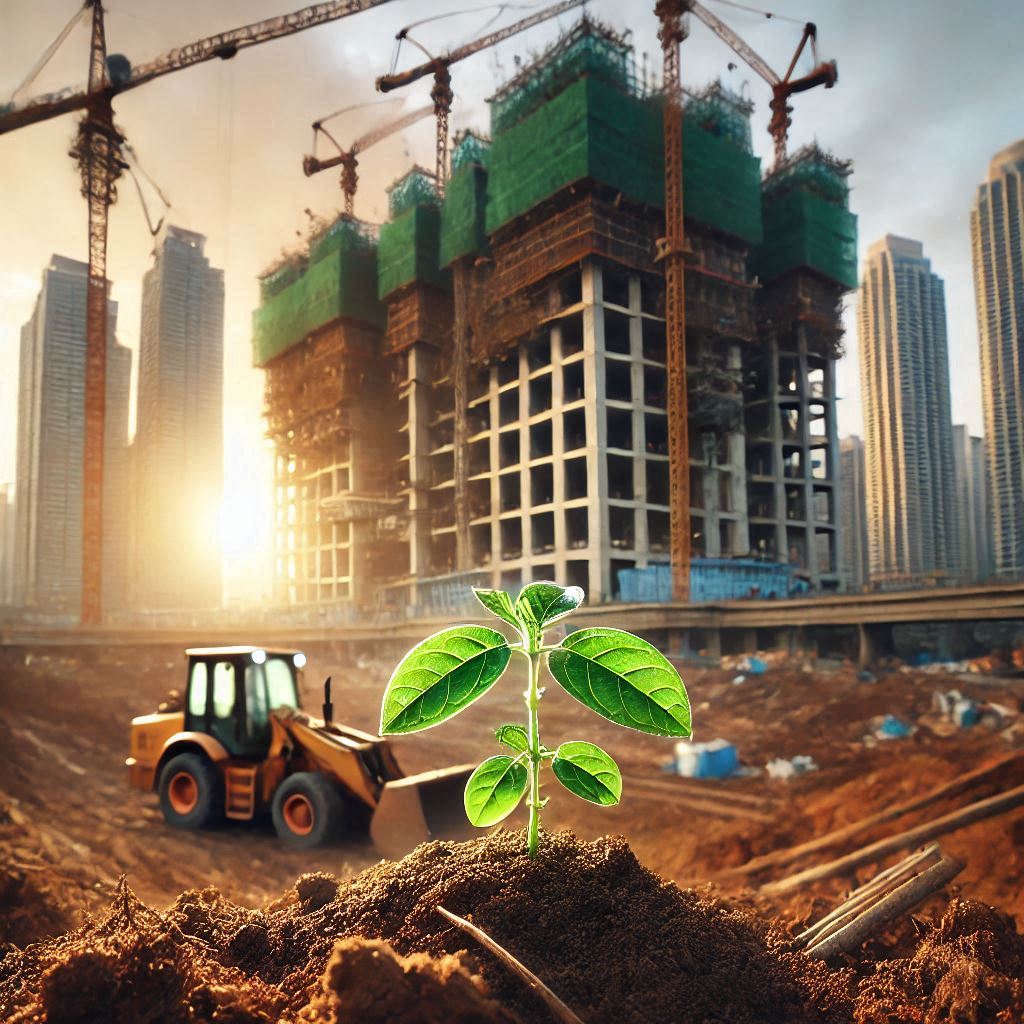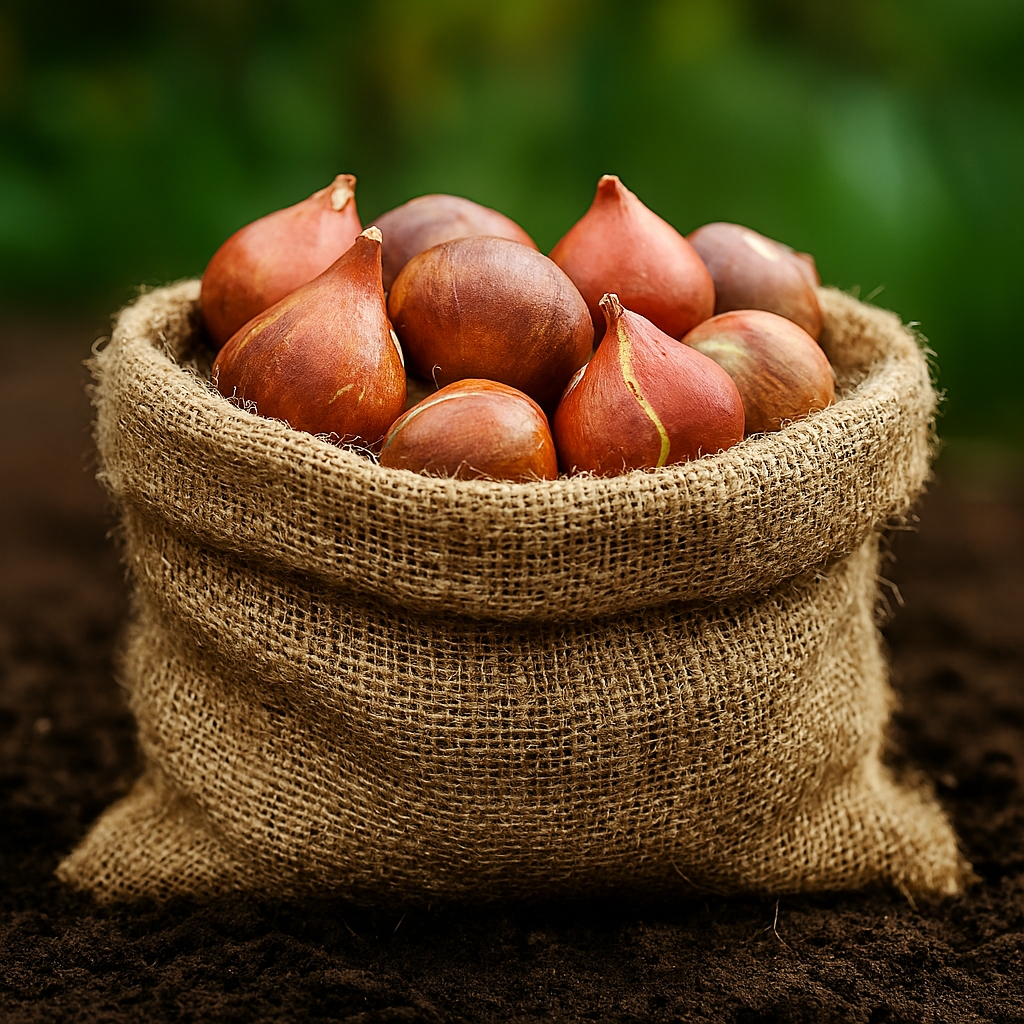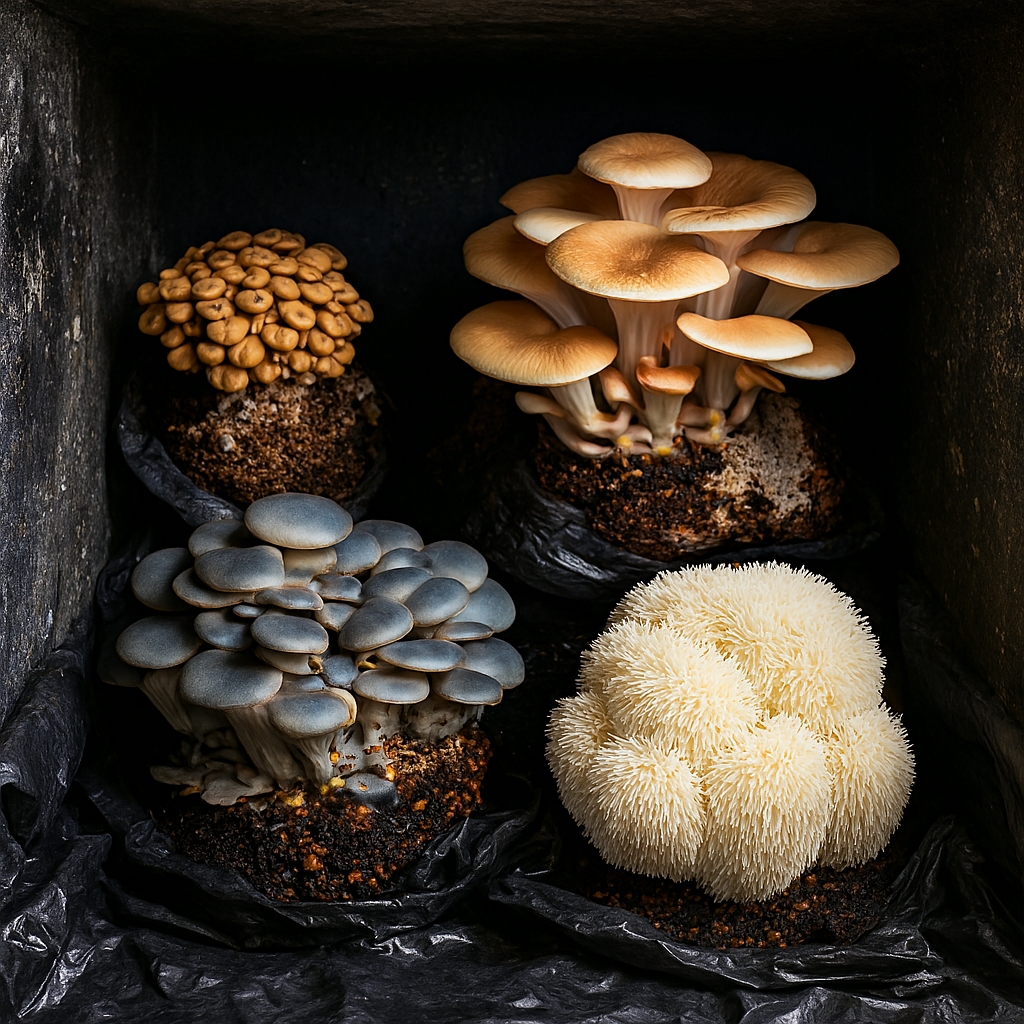A Festival of Renewal, Connection, and Ecological Reckoning
Why Diwali Matters – Cultural Continuity and Adaptive Evolution
Diwali is one of the most emotionally resonant and culturally unifying festivals in South Asia and across the global diaspora. It marks the symbolic triumph of light over darkness, knowledge over ignorance, and renewal over stagnation. The festival’s rituals—lighting diyas, sharing sweets, cleaning homes, and telling stories—create deep emotional memory and intergenerational bonding. Diwali supports local economies, artisans, farmers, and small businesses through seasonal demand and cultural patronage. It fosters social cohesion through gifting, hospitality, and communal prayer. The festival’s timing near harvest season aligns with gratitude, abundance, and ecological cycles. Diwali’s visual language—rangoli, lights, and decor—offers a rich canvas for storytelling and symbolic expression. Its multisensory nature makes it one of the most psychologically immersive festivals in the world. However, the scale of modern Diwali celebrations introduces ecological strain through pollution, waste, and energy consumption. Fireworks, synthetic decor, and overconsumption challenge the festival’s sustainability. Climate change and urbanization demand new ways of celebrating that honor tradition while reducing harm. Diwali must evolve to remain relevant and responsible in a rapidly changing world. Adaptive practices—like silent fireworks, solar lighting, and eco-gifting—preserve its spirit while minimizing impact. Cultural continuity depends on the ability to reinterpret rituals without losing their emotional core. Diwali’s future lies in its capacity to illuminate not just homes, but ecological truth and shared responsibility.
| Diwali Element | Cultural Value | Adaptive Opportunity |
|---|---|---|
| Lighting Diyas | Symbol of hope | Solar-powered alternatives |
| Fireworks | Celebration, awe | Silent light shows |
| Gifting | Reciprocity, bonding | Ethical, reusable gifts |
| Cleaning Rituals | Renewal, purity | Eco-friendly products |

Diwali and the Environment
Diwali as a Catalyst for Environmental Awareness
Diwali’s core symbolism of light overcoming darkness can be reinterpreted as ecological renewal. The festival encourages home cleaning, which often leads to decluttering and recycling. Many communities use Diwali to launch tree-planting drives and urban greening initiatives. Clay diyas are biodegradable and support local artisans, reducing reliance on plastic decor. Organic rangoli powders made from turmeric, beetroot, and rice flour are safe for soil and water. Solar-powered lights are increasingly used in homes and public spaces during Diwali. Community pujas reduce individual resource consumption and promote shared responsibility. Schools and NGOs distribute green Diwali kits to children, fostering early ecological literacy. Local markets thrive during Diwali, reducing carbon footprints linked to long-distance shipping. Eco-conscious gifting includes seed bombs, reusable items, and handmade crafts. Composting organic waste from feasts reduces landfill pressure and methane emissions. Public campaigns encourage carpooling and reduced travel during the holiday. Diwali’s emphasis on renewal aligns with sustainable consumption and circular design. The festival’s timing near harvest season reinforces gratitude for natural abundance. Diwali can serve as a gateway to climate-conscious behavior when framed through ecological symbolism.
| Eco-Friendly Practice | Environmental Benefit | Cultural Compatibility |
|---|---|---|
| Clay Diyas | Biodegradable, low energy | Traditional aesthetic |
| Solar Lights | Reduced emissions | Modern adaptation |
| Organic Rangoli | Non-toxic, soil-safe | Vibrant colors |
| Upcycled Decor | Waste reduction | Creative reuse |
Psychological Benefits of Diwali – Emotional Renewal and Social Cohesion
Diwali fosters emotional resilience through multisensory rituals and symbolic storytelling. Lighting diyas activates visual and olfactory memory, deepening emotional imprinting. The act of gifting reinforces social bonds and reciprocal trust. Traditional foods evoke nostalgia, linking taste to memory and identity. Rangoli patterns engage spatial creativity and meditative focus. Wearing new clothes enhances self-esteem and social presentation. Family gatherings foster emotional security and intergenerational bonding. Prayers and pujas offer structured reflection, reducing anxiety and enhancing spiritual coherence. The festival’s timing near seasonal transitions enhances its emotional salience. Diwali stories, especially those of Rama and Lakshmi, reinforce moral frameworks and cultural continuity. The repetition of rituals across generations strengthens cultural identity and emotional resilience. Fireworks, though controversial, stimulate sensory excitement and collective euphoria. Music and chants during pujas activate auditory memory and spiritual resonance. Emotional bonding during festivals strengthens attachment and social trust. Diwali’s multisensory nature makes it one of the most psychologically immersive festivals in South Asia.
| Psychological Element | Emotional Effect | Cultural Role |
|---|---|---|
| Lighting Diyas | Comfort, focus | Symbol of hope |
| Gifting | Trust, bonding | Reciprocity ritual |
| Rangoli | Creativity, calm | Visual celebration |
| Family Gatherings | Security, joy | Intergenerational unity |
Community and Local Economies – Diwali’s Role in Sustainable Livelihoods
Diwali supports millions of small businesses, artisans, and farmers across South Asia. Local markets see a surge in demand for handmade decor, sweets, and textiles. Clay diya production sustains rural potters and preserves traditional craft. Organic food vendors benefit from increased interest in health-conscious feasting. Textile workers and tailors experience seasonal employment boosts due to new clothing traditions. Florists and farmers supply marigolds and other festive blooms for rituals. Eco-friendly packaging businesses gain visibility during green Diwali campaigns. Local transport providers benefit from intra-city travel and shopping. Community events often feature local performers, musicians, and storytellers. NGOs and cooperatives use Diwali to promote fair trade and ethical gifting. Urban gardens and tree-planting drives align Diwali with ecological restoration. Schools host sustainability workshops tied to Diwali themes. Local economies thrive when consumers prioritize handmade and regionally sourced goods. Diwali’s emphasis on abundance can be reframed as support for regenerative economies. The festival’s economic footprint can be redirected toward inclusive, low-impact growth.
| Sector Benefited | Diwali Contribution | Sustainability Potential |
|---|---|---|
| Pottery | Clay diya demand | Biodegradable products |
| Textiles | New clothing sales | Local sourcing |
| Agriculture | Flower and food supply | Organic farming |
| Packaging | Gift wrapping | Compostable materials |
Ecological Challenges of Fireworks – Air, Soil, and Noise Pollution
Fireworks release fine particulate matter (PM2.5 and PM10) that penetrates deep into the lungs. These particles are linked to respiratory diseases, cardiovascular stress, and reduced lung function. Fireworks also emit sulfur dioxide, nitrogen oxides, and carbon monoxide. Heavy metals like lead, barium, and strontium are used to produce colors and effects. These metals settle on soil and water surfaces, contaminating ecosystems. Air quality indices in major Indian cities often reach hazardous levels post-Diwali. Children, the elderly, and those with pre-existing conditions are most vulnerable. Hospitals report spikes in asthma attacks and bronchitis during Diwali week. The chemical composition of firecrackers varies widely, complicating regulation. Noise from fireworks contributes to psychological stress and sleep disruption. Wildlife experiences disorientation and habitat abandonment due to acoustic shock. Alternatives like laser shows and silent fireworks are gaining popularity. Public awareness campaigns have helped reduce firecracker usage in metro cities. Long-term exposure to Diwali pollutants can have cumulative health effects. Balancing tradition with ecological safety remains a key challenge.
| Pollutant Type | Source in Fireworks | Health Impact |
|---|---|---|
| PM2.5 | Combustion residue | Lung irritation, asthma |
| Sulfur Dioxide | Sulfur-based compounds | Respiratory distress |
| Lead | Metal salts | Neurological damage |
| Noise | Explosive sound | Hearing loss, anxiety |

Water Usage and Ritual Cleansing – Symbolism and Sustainability
Diwali rituals often involve thorough cleaning of homes, courtyards, and communal spaces. This symbolic cleansing represents the removal of negativity and the invitation of prosperity. Water usage spikes during this period due to washing, scrubbing, and decorative preparation. In urban areas, this can strain municipal water supplies and increase wastewater output. Traditional cleaning agents like ash and lime are biodegradable and culturally rooted. However, modern chemical cleaners contribute to water pollution and aquatic toxicity. Ritual bathing before pujas is seen as spiritual purification, linking water to emotional renewal. In rural areas, Diwali cleaning often coincides with rainwater harvesting and tank maintenance. Decorative fountains and water features are used to enhance festive ambiance. Eco-conscious households use greywater systems to recycle cleaning runoff. Public campaigns promote water conservation during Diwali through timed usage and low-flow fixtures. Cultural narratives around Lakshmi emphasize cleanliness as a virtue, aligning with ecological stewardship. Water symbolism in Diwali can be reframed to support hydrological awareness. Community cleaning drives foster civic pride and environmental responsibility. Diwali’s cleansing rituals offer a platform for sustainable water practices.
| Water Activity | Environmental Impact | Sustainable Alternative |
|---|---|---|
| Home Cleaning | High water use | Greywater recycling |
| Ritual Bathing | Moderate use | Timed showers |
| Decorative Fountains | Evaporation loss | Solar-powered pumps |
| Chemical Cleaners | Water pollution | Biodegradable soaps |
Food Systems and Festive Feasting – Abundance, Waste, and Regeneration
Diwali feasting is a celebration of abundance, hospitality, and culinary tradition. Families prepare elaborate meals featuring sweets, snacks, and regional specialties. These foods often require high energy inputs for cooking and refrigeration. Packaging waste from store-bought items contributes to landfill overflow. Leftovers and spoilage lead to increased organic waste during the festival. Traditional recipes use seasonal ingredients, supporting local agriculture and biodiversity. Community kitchens and langars reduce individual resource use and promote inclusivity. Composting food scraps can transform waste into soil-enriching biomass. Plant-based menus reduce the carbon footprint of festive meals. Cultural norms around sharing food support equitable distribution and reduce excess. Urban households are adopting portion planning to minimize waste. NGOs organize food donation drives during Diwali to support vulnerable populations. Culinary rituals reinforce emotional memory and intergenerational bonding. Diwali sweets like laddoos and barfis are often made in bulk, requiring careful storage. Food systems during Diwali reflect both ecological strain and regenerative potential. Sustainable feasting practices can align tradition with environmental ethics.
| Food Practice | Ecological Effect | Sustainable Strategy |
|---|---|---|
| Bulk Cooking | Energy intensive | Portion planning |
| Packaged Sweets | Plastic waste | Homemade alternatives |
| Leftovers | Organic waste | Composting |
| Animal Products | High emissions | Plant-based menus |
Emotional Ecology of Diwali – Rituals That Heal and Connect
Diwali rituals engage emotional ecology by linking sensory experience to psychological healing. Lighting diyas creates warmth and visual coherence, reducing stress and promoting calm. Rangoli designs stimulate creativity and meditative focus. Scented oils and incense activate olfactory memory, deepening emotional imprinting. Music and chants during pujas offer auditory grounding and spiritual resonance. Family gatherings foster emotional security and intergenerational bonding. Gifting rituals reinforce trust, reciprocity, and social cohesion. Wearing new clothes enhances self-esteem and symbolic renewal. Storytelling during Diwali transmits moral frameworks and cultural identity. Emotional anticipation of Diwali triggers dopamine release, enhancing mood and motivation. Ritual repetition strengthens neural pathways associated with comfort and safety. Community events reduce isolation and promote belonging. Emotional memory linked to Diwali can buffer against stress and trauma. The festival’s timing near seasonal transitions enhances its emotional salience. Diwali’s multisensory nature makes it one of the most psychologically immersive festivals. Emotional ecology during Diwali reflects the interplay between ritual, memory, and wellbeing.
| Ritual Element | Emotional Effect | Ecological Parallel |
|---|---|---|
| Lighting Diyas | Calm, focus | Renewable symbolism |
| Rangoli | Creativity, joy | Natural pigments |
| Gifting | Trust, bonding | Ethical consumption |
| Storytelling | Identity, meaning | Cultural resilience |
Symbolic Reframing – Diwali as Ecological Restoration
Diwali’s core symbolism of light overcoming darkness can be reinterpreted as ecological renewal. The triumph of good over evil parallels the shift from exploitation to stewardship. Lakshmi’s blessings can be reframed as prosperity through sustainability. Cleaning rituals symbolize the removal of environmental toxins and clutter. Lighting diyas can represent the illumination of ecological awareness. Rangoli patterns mirror biodiversity and natural symmetry. Gifting can evolve into acts of ecological generosity—planting trees, sharing seeds, or donating to conservation. Fireworks can be replaced with silent light shows that celebrate without polluting. Feasting can honor seasonal abundance and regenerative agriculture. Clothing traditions can support ethical fashion and local artisans. Storytelling can transmit ecological values and intergenerational wisdom. Community events can become platforms for climate education and green innovation. Diwali’s timing near harvest season aligns with gratitude for Earth’s cycles. Emotional renewal can be linked to ecological healing. Symbolic reframing allows Diwali to evolve without losing its cultural soul.
| Traditional Symbol | Ecological Reframe | Actionable Practice |
|---|---|---|
| Lakshmi | Sustainable prosperity | Ethical gifting |
| Diyas | Awareness light | Solar lamps |
| Cleaning | Detoxification | Eco-friendly products |
| Feasting | Seasonal abundance | Local, plant-based menus |

Water Usage and Ritual Cleansing – Symbolism and Sustainability
Diwali rituals often involve thorough cleaning of homes, courtyards, and communal spaces. This symbolic cleansing represents the removal of negativity and the invitation of prosperity. Water usage spikes during this period due to washing, scrubbing, and decorative preparation. In urban areas, this can strain municipal water supplies and increase wastewater output. Traditional cleaning agents like ash and lime are biodegradable and culturally rooted. However, modern chemical cleaners contribute to water pollution and aquatic toxicity. Ritual bathing before pujas is seen as spiritual purification, linking water to emotional renewal. In rural areas, Diwali cleaning often coincides with rainwater harvesting and tank maintenance. Decorative fountains and water features are used to enhance festive ambiance. Eco-conscious households use greywater systems to recycle cleaning runoff. Public campaigns promote water conservation during Diwali through timed usage and low-flow fixtures. Cultural narratives around Lakshmi emphasize cleanliness as a virtue, aligning with ecological stewardship. Water symbolism in Diwali can be reframed to support hydrological awareness. Community cleaning drives foster civic pride and environmental responsibility. Diwali’s cleansing rituals offer a platform for sustainable water practices.
| Water Activity | Environmental Impact | Sustainable Alternative |
|---|---|---|
| Home Cleaning | High water use | Greywater recycling |
| Ritual Bathing | Moderate use | Timed showers |
| Decorative Fountains | Evaporation loss | Solar-powered pumps |
| Chemical Cleaners | Water pollution | Biodegradable soaps |
Food Systems and Festive Feasting – Abundance, Waste, and Regeneration
Diwali feasting is a celebration of abundance, hospitality, and culinary tradition. Families prepare elaborate meals featuring sweets, snacks, and regional specialties. These foods often require high energy inputs for cooking and refrigeration. Packaging waste from store-bought items contributes to landfill overflow. Leftovers and spoilage lead to increased organic waste during the festival. Traditional recipes use seasonal ingredients, supporting local agriculture and biodiversity. Community kitchens and langars reduce individual resource use and promote inclusivity. Composting food scraps can transform waste into soil-enriching biomass. Plant-based menus reduce the carbon footprint of festive meals. Cultural norms around sharing food support equitable distribution and reduce excess. Urban households are adopting portion planning to minimize waste. NGOs organize food donation drives during Diwali to support vulnerable populations. Culinary rituals reinforce emotional memory and intergenerational bonding. Diwali sweets like laddoos and barfis are often made in bulk, requiring careful storage. Food systems during Diwali reflect both ecological strain and regenerative potential. Sustainable feasting practices can align tradition with environmental ethics.
| Food Practice | Ecological Effect | Sustainable Strategy |
|---|---|---|
| Bulk Cooking | Energy intensive | Portion planning |
| Packaged Sweets | Plastic waste | Homemade alternatives |
| Leftovers | Organic waste | Composting |
| Animal Products | High emissions | Plant-based menus |
Emotional Ecology of Diwali – Rituals That Heal and Connect
Diwali rituals engage emotional ecology by linking sensory experience to psychological healing. Lighting diyas creates warmth and visual coherence, reducing stress and promoting calm. Rangoli designs stimulate creativity and meditative focus. Scented oils and incense activate olfactory memory, deepening emotional imprinting. Music and chants during pujas offer auditory grounding and spiritual resonance. Family gatherings foster emotional security and intergenerational bonding. Gifting rituals reinforce trust, reciprocity, and social cohesion. Wearing new clothes enhances self-esteem and symbolic renewal. Storytelling during Diwali transmits moral frameworks and cultural identity. Emotional anticipation of Diwali triggers dopamine release, enhancing mood and motivation. Ritual repetition strengthens neural pathways associated with comfort and safety. Community events reduce isolation and promote belonging. Emotional memory linked to Diwali can buffer against stress and trauma. The festival’s timing near seasonal transitions enhances its emotional salience. Diwali’s multisensory nature makes it one of the most psychologically immersive festivals. Emotional ecology during Diwali reflects the interplay between ritual, memory, and wellbeing.
| Ritual Element | Emotional Effect | Ecological Parallel |
|---|---|---|
| Lighting Diyas | Calm, focus | Renewable symbolism |
| Rangoli | Creativity, joy | Natural pigments |
| Gifting | Trust, bonding | Ethical consumption |
| Storytelling | Identity, meaning | Cultural resilience |
Symbolic Reframing – Diwali as Ecological Restoration
Diwali’s core symbolism of light overcoming darkness can be reinterpreted as ecological renewal. The triumph of good over evil parallels the shift from exploitation to stewardship. Lakshmi’s blessings can be reframed as prosperity through sustainability. Cleaning rituals symbolize the removal of environmental toxins and clutter. Lighting diyas can represent the illumination of ecological awareness. Rangoli patterns mirror biodiversity and natural symmetry. Gifting can evolve into acts of ecological generosity—planting trees, sharing seeds, or donating to conservation. Fireworks can be replaced with silent light shows that celebrate without polluting. Feasting can honor seasonal abundance and regenerative agriculture. Clothing traditions can support ethical fashion and local artisans. Storytelling can transmit ecological values and intergenerational wisdom. Community events can become platforms for climate education and green innovation. Diwali’s timing near harvest season aligns with gratitude for Earth’s cycles. Emotional renewal can be linked to ecological healing. Symbolic reframing allows Diwali to evolve without losing its cultural soul.
| Traditional Symbol | Ecological Reframe | Actionable Practice |
|---|---|---|
| Lakshmi | Sustainable prosperity | Ethical gifting |
| Diyas | Awareness light | Solar lamps |
| Cleaning | Detoxification | Eco-friendly products |
| Feasting | Seasonal abundance | Local, plant-based menus |
Diwali and Biodiversity – Wildlife, Habitats, and Seasonal Sensitivity
Diwali’s timing coincides with key seasonal transitions in South Asia’s biodiversity calendar. Many species are migrating, nesting, or entering breeding cycles during this period. Fireworks and noise pollution disrupt nocturnal animals and birds, causing disorientation and flight. Urban wildlife such as bats, owls, and stray dogs are particularly affected. Chemical residues from firecrackers contaminate soil and water, impacting insects and aquatic life. Light pollution interferes with insect navigation and pollination patterns. Marigold cultivation for Diwali rituals supports pollinators and local ecosystems. Organic rangoli powders are safe for ants, earthworms, and soil microbes. Community gardens and green corridors offer refuge for urban wildlife during festivities. Silent celebrations reduce stress on animals and improve ecological harmony. Diwali’s floral traditions can be expanded to include native plant restoration. Ritual offerings should avoid plastic and synthetic materials that harm scavengers. Educational campaigns link Diwali choices to biodiversity outcomes. Wildlife rescue organizations report increased distress calls during Diwali week. Diwali’s cultural emphasis on harmony can be extended to include non-human life.
| Biodiversity Factor | Diwali Impact | Ecological Response |
|---|---|---|
| Nocturnal Wildlife | Disorientation, stress | Silent rituals, habitat buffers |
| Insects | Light interference | Organic decor, native plants |
| Aquatic Life | Chemical runoff | Eco-friendly rangoli |
| Urban Animals | Noise trauma | Pet-safe zones, awareness drives |

Diwali and Waste Systems – Packaging, Plastics, and Circular Design
Diwali generates significant waste through packaging, decor, and disposable items. Gift boxes, sweet containers, and plastic wraps contribute to landfill overflow. Synthetic decor often includes thermocol, foil, and glitter that are non-biodegradable. Food waste increases due to overproduction and spoilage during feasts. Single-use items dominate urban Diwali markets due to convenience and cost. Compostable packaging is gaining traction among eco-conscious consumers. Upcycled decor from previous years promotes circular consumption and creative reuse. Community waste segregation drives improve recycling rates during Diwali. NGOs distribute zero-waste kits with reusable plates, cloth bags, and natural dyes. Public campaigns encourage bulk gifting and minimal packaging. Schools teach children to make decor from recycled materials. Local artisans offer biodegradable alternatives to synthetic products. Waste audits during Diwali help cities plan better for future festivals. Circular design principles align with Diwali’s theme of renewal and transformation. Diwali’s visual culture can evolve toward low-impact aesthetics. Waste systems during Diwali reflect both ecological strain and design opportunity.
| Waste Type | Diwali Source | Sustainable Alternative |
|---|---|---|
| Plastic Packaging | Gift boxes, sweets | Compostable materials |
| Synthetic Decor | Foil, glitter | Upcycled crafts |
| Food Waste | Feasts, leftovers | Portion planning, composting |
| Single-Use Items | Convenience goods | Reusables, zero-waste kits |
Diwali and Emotional Sustainability – Rituals That Nourish and Restore
Emotional sustainability refers to practices that support long-term psychological wellbeing. Diwali rituals offer structured emotional renewal through light, sound, scent, and story. Lighting diyas creates visual warmth and symbolic clarity. Rangoli patterns engage meditative focus and spatial creativity. Scented oils and incense activate olfactory memory and emotional grounding. Music and chants during pujas offer auditory coherence and spiritual resonance. Family gatherings foster emotional security and intergenerational bonding. Gifting rituals reinforce trust, reciprocity, and social cohesion. Wearing new clothes enhances self-esteem and symbolic transformation. Storytelling transmits moral frameworks and cultural identity. Emotional anticipation of Diwali triggers dopamine release and motivation. Ritual repetition strengthens neural pathways linked to comfort and safety. Community events reduce isolation and promote belonging. Emotional memory linked to Diwali can buffer against stress and trauma. Diwali’s multisensory nature makes it one of the most psychologically immersive festivals. Emotional sustainability during Diwali reflects the interplay between ritual, memory, and wellbeing.
| Ritual Element | Emotional Effect | Sustainability Parallel |
|---|---|---|
| Lighting Diyas | Calm, clarity | Renewable symbolism |
| Rangoli | Creativity, focus | Natural pigments |
| Gifting | Bonding, trust | Ethical consumption |
| Storytelling | Meaning, identity | Cultural resilience |
Diwali’s Legacy – Cultural Continuity and Ecological Transformation
Diwali’s legacy is shaped by its ability to evolve while preserving core values. The festival’s emphasis on light, renewal, and abundance offers ecological metaphors. Cultural continuity supports long-term behavioral change and value transmission. Emotional memory reinforces sustainable habits when rituals are aligned with stewardship. Community-led green Diwali movements demonstrate scalable impact. Schools and families transmit ecological values through festive participation. Local economies benefit from eco-conscious consumer shifts. Rituals of light and cleansing support symbolic transformation. Interfaith parallels expand Diwali’s reach and relevance. Climate literacy during Diwali builds ecological resilience. Urban planning can integrate Diwali into green infrastructure cycles. Visual storytelling embeds climate narratives into festive aesthetics. Public policy can align with cultural rhythms for better adoption. Diwali’s future lies in its ability to illuminate ecological truth. The festival can become a beacon for environmental ethics and emotional renewal. Diwali’s legacy is not fixed—it is co-authored by every choice we make.
| Legacy Element | Cultural Role | Ecological Potential |
|---|---|---|
| Ritual Continuity | Identity, memory | Habit formation |
| Emotional Memory | Resilience, bonding | Sustainable behavior |
| Community Movements | Participation | Scalable impact |
| Visual Culture | Aesthetic tradition | Climate storytelling |
Diwali’s Closing Light – Renewal, Responsibility, and Shared Futures
Diwali is more than a festival—it is a cultural mirror reflecting our emotional depth and ecological choices. Its rituals of light, cleansing, and storytelling offer symbolic tools for healing both ourselves and the planet. When reframed through sustainability, Diwali becomes a living blueprint for climate-conscious celebration. Emotional memory and cultural continuity make it a powerful vehicle for long-term behavioral change. Every diya lit with intention becomes a beacon of ecological awareness. Every rangoli drawn with natural pigments becomes a tribute to biodiversity. Every gift chosen with care becomes a gesture of regenerative economy. Diwali’s multisensory richness allows for immersive climate literacy and emotional restoration. Community-led green Diwali movements show that tradition and innovation can coexist. Urban planning, education, and storytelling can align Diwali with planetary stewardship. Interfaith parallels expand its relevance and deepen its symbolic resonance. Waste systems, food rituals, and decor choices shape its ecological footprint. Emotional sustainability ensures that Diwali nourishes rather than depletes. The festival’s legacy is co-authored by every choice we make. Diwali’s future lies in its ability to illuminate ecological truth and emotional renewal. Let this Diwali be a celebration of light, life, and lasting impact.
Join the Discussion
How are you celebrating Diwali this year—with light, with care, or with new rituals? What sustainable traditions are you building for your community or family? Which part of Diwali feels most emotionally resonant or ecologically transformative to you?
#Diwali2025 #GreenDiwali #FestivalOfLight #EcoCelebration #EmotionalSustainability #CulturalRenewal #ClimateConsciousRituals #SymbolicStewardship #InclusiveTradition #DiwaliForThePlanet #RitualsThatRestore #BiodiversityAndBelonging #DiwaliWisdom #CircularCelebration #LightWithIntention

















Leave a Reply